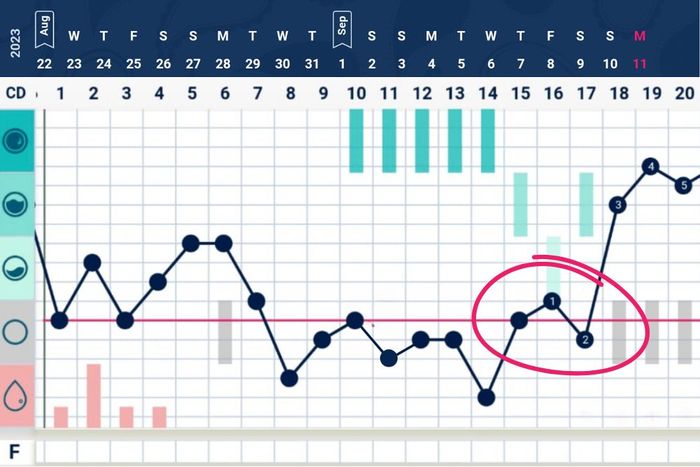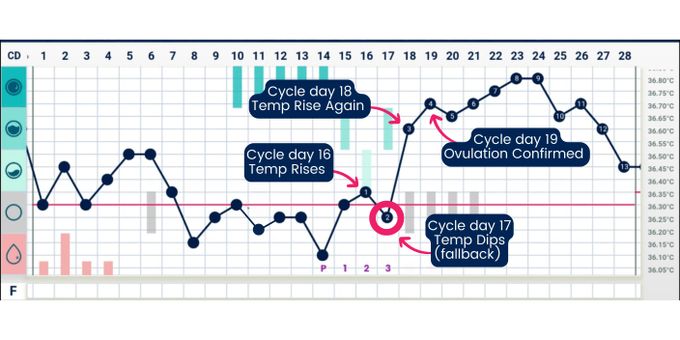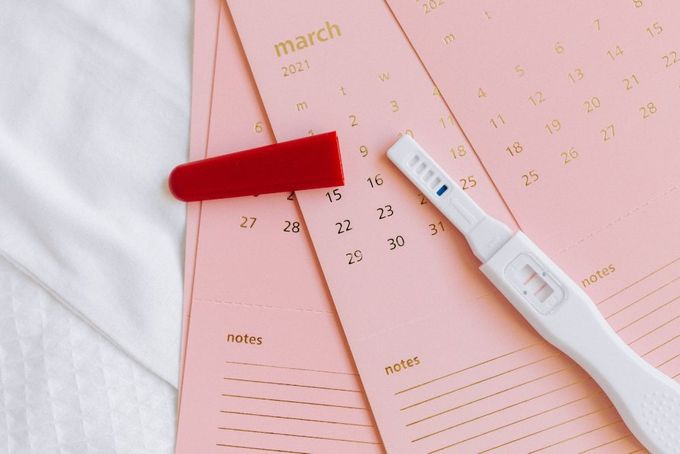Is it Normal for Your Temperature to Drop After Ovulation? Understanding the ‘Fallback Rise’
by Hannah Fenner, a Fertility Awareness Educator and founder of The Body Bluprint
Updated July 24, 2025

When you're charting your Basal Body Temperature (BBT), whether you're trying to conceive (TTC) or trying to avoid pregnancy (TTA), your main goal is to confirm that ovulation has happened.
BBT is such an incredible tool for this. However, it’s not always straightforward for every woman, every cycle. Many different patterns and variations can show up on your chart.
It’s important to remember: Some cycles look “textbook”. Others? Not so much. And that’s okay!
One common (and often confusing!) pattern I see is something called a fallback rise. If you’ve ever noticed your temperatures climb, then suddenly dip the next day, only to rise again, you’re not alone.
If you’ve seen this on your chart and thought, Wait, did I actually ovulate?—you’re not alone.
Let’s talk about what a fallback rise is, why it happens, and what to do when you see one on your chart.
What is a Fallback Rise?
A fallback rise is a BBT pattern where your temperature rises - suggesting ovulation has happened - but then dips the next day, before rising again and remaining high.
This dip can be a little dramatic and may even fall below your chart’s coverline (the line that marks your pre- and post-ovulation temps).
It usually shows up around the second or third day after your initial temperature rise, and then your temps return to the higher post-ovulation range.
What Causes a Fallback Rise After Ovulation?
During ovulation, a structure called the corpus luteum forms on your ovary and starts producing the hormone progesterone—this is the hormone that makes your BBT rise.
But here's the twist: the corpus luteum also releases a small amount of estrogen, and that little burst of estrogen can cause a temporary temperature dip shortly after ovulation. That’s the fallback rise!
It might look strange on your chart, but it’s completely normal and nothing to worry about—just another one of your body's quirky, hormone-fueled moments.
How to Interpret a Fallback Rise on Your Fertility Chart
When you experience a cycle with a fallback rise pattern, it’s important to use the correct set of charting rules, which can vary slightly depending on which Fertility Awareness-Based Method (FABM) you’re using.
Always follow the guidelines of your specific method, but here’s a general rule that applies to many:
If the second or third temperature after ovulation falls on or below the coverline, a fourth consecutive high temperature is needed to confirm ovulation.
Remember the Rule: The fourth temperature must be at least 0.2°C (or 0.4°F) above the coverline to confirm ovulation.
Let’s take a look at a real-life chart example and apply the fallback rise rule to interpret it correctly.
In this real-life chart:
On Cycle Day 16: The temperature rises — this suggests potential ovulation.
The next day (Cycle Day 17): The temperature dips - this is the fallback!
On the following days (Cycle Days 18 & 19): The temperatures rise again and stay elevated.
→ Since the fourth temperature (on Cycle Day 19) is at least 0.2°C / 0.4°F above the coverline, ovulation can be confirmed - even with the temporary dip on Cycle Day 17.
Charting a Fallback Rise When You’re Avoiding Pregnancy
This is where accuracy really matters!
Each Fertility Awareness-Based Method (FABM) has its own specific rules about how to confirm ovulation, and it’s critical to follow them correctly and carefully when you’re avoiding pregnancy.
So, if you’re trying to avoid pregnancy (TTA) and see a fallback rise, make sure to:
Understand your method’s rules. Some require extra high temps to confirm ovulation after a fallback rise.
Wait for that fourth high temperature before confirming ovulation.
Cross-check with cervical mucus observations. This is to confirm the fertile window has closed.
Remember: Taking the time to apply the rules correctly helps you avoid risky guesswork and to chart with confidence.
Navigating a Fallback Rise When You’re Trying to Conceive
When trying to conceive (TTC), fallback rises can feel confusing (and at times frustrating), but they’re not a bad sign.
The key thing is still confirming that ovulation happened. And if you see a fallback dip, but your temperatures rise again and stay high, that’s a good thing. It means your progesterone is doing its job.
Still not sure what your chart is telling you? That’s totally okay. You can work with a fertility awareness educator or get a chart review to gain clarity and confidence.
Final Thoughts: Don’t Panic, Just Chart Smart
A fallback rise can look strange and even alarming at first, especially if you're new to BBT charting. But once you know what it is and how to handle it, it becomes just another interesting data point in your unique cycle story.
So if you notice a temperature dip after ovulation, don’t panic. Just:
✔️ Wait for that fourth high temp ✔️ Cross-check your other signs ✔️ And trust that your body knows what it’s doing
You’ve got this!







